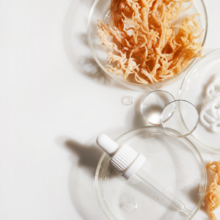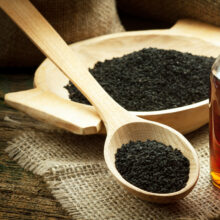Ask Will: Good Chocolate vs. Bad Chocolate & How to Spot the Difference
- Published: Wednesday, February 11th 2015
- in Nutrition
In our newest weekly series Ask Will, our resident nutrition expert, Dr. Will Clower, Founder & CEO of Mediterranean Wellness, will be answering your questions on food, diet, and nutrition each Wednesday! He’ll tackle the common and the not-so-common concerns we all have with food and help us work towards creating the best nutrition plan for us! Have a question for Dr. Clower? Ask Will in the comments below and stay tuned each Wednesday to see your question get answered!
 Q: With Valentine’s Day coming up I’m a bit confused. Normally I’d just get chocolates for my wife, knowing that they’re a decadent, not-so-good-for-you treat. But lately I’ve heard that there’s good chocolate and bad chocolate. Now I feel like I could actually making wrong choice!
Q: With Valentine’s Day coming up I’m a bit confused. Normally I’d just get chocolates for my wife, knowing that they’re a decadent, not-so-good-for-you treat. But lately I’ve heard that there’s good chocolate and bad chocolate. Now I feel like I could actually making wrong choice!
A: As the bearer of good news, I just want to let you know that chocolate is a righteous health food. In fact, it’s one of the healthiest foods you could possibly eat:
- for your heart
- for your emotional state
- for your metabolism
- for insulin control for diabetics
- for your blood pressure
- and even for your skin health!
But you’re absolutely correct that not everything with “chocolate” slapped on the label is good for you. The part of the chocolate that is the most highly packed with health properties comes from the cocoa itself. So, if the chocolate you’re choosing this Valentine’s Day is a high cocoa chocolate, then it’s a healthy chocolate. Otherwise, it’s just not.
Here’s the way to think about it. Most people crave chocolates that are dramatically over-sweetened to feed their sweet tooth. In other words, they use chocolate as nothing more than a vehicle for sugar.
If you want your Valentine’s Day gift of chocolate to be healthy, it needs to be a vehicle for cocoa. This is the principle difference between chocolate and “chocolate”.
- Chocolate = a cocoa delivery device.
- “Chocolate” = a sugar delivery device.
That’s why everyone says that chocolate with higher cocoa content (darker chocolate) is better! Plus, as the cocoa percentage increases from 50 percent to 60 percent to 70 percent and so forth, the sugar content drops. In other words, you’re getting more of the good stuff (cocoa) and less of the bad stuff (sugar). Win-win!
One more bit of coaching in order to find healthy chocolate is to look for three characteristics: Solid. Dark. Chocolate. Skip the goop and nougat and wafer and filling and caramel because those are all unhealthy. There are many good brands out there (Green & Blacks is one I’m fond of), but you’re going to be safe if you keep these rules in mind.
So when you’re buying a gift for your sweetie, now you know the difference between chocolate and “chocolate”. Maximize the cocoa to minimize the sugar, with solid dark chocolate!
For more information: visit Will Clower’s website.



